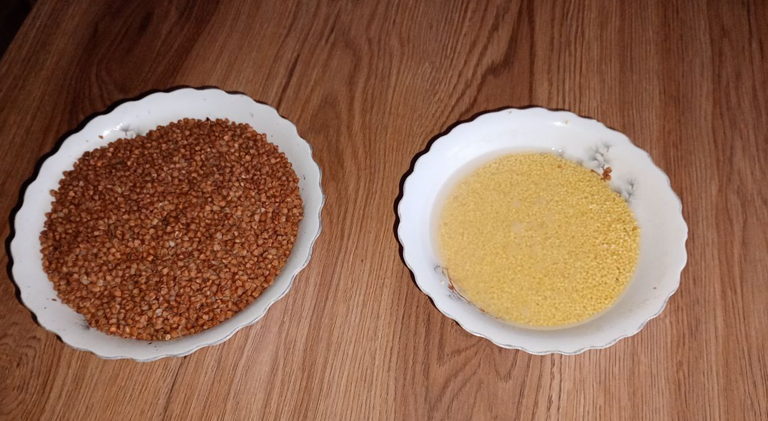(DE/EN) Was ist Phytinsäure? / What is phytic acid?
Hi,
nur ein kleiner Beitrag um diesen Stoff kurz anzumerken und in Vordergrund zu rücken.
Diesen Begriff habe ich nun schon öfters gelesen in Bezug darauf, dass es den Körper in zu hohen Maße schädigen kann.
Phytinsäure ist enthalten in allen:
- Hülsenfrüchten
- Nüssen
- Samen
- Kerne
- ungeschälten Reis
- Vollkornprodukte
- Mais
- Getreideprodukte, Kleie
Welche Funktion hat Phytinsäure?
Phytine kommen natürlich in Samen vor.
Hülsenfrüchte und Getreide haben viel mehr Phytine.
Die Aufgabe der Phytinsäure ist, die Pflanze vor Fressfreinden zu schützen, damit der Samen lediglich zur Fortpflanzung der Spezies dient.
Das Problem daran ist, dass wir ebenfalls Fressfeinde des Samens darstellen und der Stoff in unserem Körper Mineralstoffe aufnehmen kann, welche dann wiederum unseren Körper fehlen. Heute nennt man solch einen Stoff, der Mineralstoffe aus unserem Körper aufnimmt, ein Anti-Nährstoff.
Dies ist auch sehr schlau von der Natur gemacht: Denn indem der Samen ungekeimt durch unseren Verdauungstrakt hindurch geht, bindet er alle Mineralstoffe, die er dann bei Ausscheidung braucht um zu einer Pflanze zu werden.
Phytinsäure lässt sich einfach abbauen, sodass wir wieder von den positiven Wirkstoffe der jeweiligen Pflanze profitieren können:
Wenn wir die Samen, Nüsse und Hülsenfrüchte in Wasser einweichen, dann beginnt der Samen zu keimen. In dieser Keimung beginnt ein enzymatischer Prozess, der durch das Enzym Phytase bedingt ist, welche die Phytinsäure abbaut. Denn der Zweck der Phytine ist nun erfüllt: Er muss sich nicht mehr vor Fressfeinden schützen, sondern seine ganze Lebensenergie aufwenden um zur Pflanze heranzuwachsen.
Auch ist zu beachten, dass man das Einweichwasser von Hülsenfrüchten wegschüttet, doch bei Getreide kann man es weiterhin benutzen.
Ich benutze keine Nudeln aus der Packung mehr, da ich davon sehr starke Blähungen bekomme und Bauchschmerzen.
Dahingehend habe ich mich erstmals entschieden Kartoffeln zu essen, was auch nicht die Endlösung ist, da diese zu den Nachtschattengewächsen gehört und auch ein paar fragliche Wirkstoffe inne hat.
Im Moment weiche ich meine Hirse und mein Buchweizen am Vortag ein, schütte das jeweilige Wasser am nächsten Tag wieder weg und verarbeite es zu einer Mahlzeit. Hirse muss man 5-10 Min köcheln lassen mit einem Verhältnis von Hirse 1:2 Wasser und dann nochmals 10 min ruhen lassen, sodass das Wasser von der Hirse aufgenommen wird und es weicher ist.
Buchweizen kann ich auch nach dem Einweichen roh essen, doch zu einer warmen Mahlzeit erhitze ich es auch leicht und mische es anschließend mit der Hirse.

was denkt ihr so über pseudo-getreide?
bis dahin
~charlissy
EN (translated with deepl.com)
Hi,
Just a small contribution to briefly mention this substance and bring it to the fore.
I have read this term several times now in relation to the fact that it can damage the body in excessive amounts.
Phytic acid is contained in all:
- Legumes
- nuts
- seeds
- seeds
- unhulled rice
- whole grain products
- corn
- Cereal products, bran
What is the function of phytic acid?
Phytins occur naturally in seeds.
Pulses and cereals contain much more phytins.
The function of phytic acid is to protect the plant from predators so that the seed only serves to reproduce the species.
What is the function of phytic acid?
Phytins occur naturally in seeds.
Legumes and cereals have much more phytins.
The function of phytic acid is to protect the plant from predators so that the seed only serves to reproduce the species.
The problem with this is that we are also predators of the seed and the substance can absorb minerals in our body, which our body then lacks. Today, such a substance that absorbs minerals from our body is called an anti-nutrient.
This is also very cleverly done by nature: because by passing through our digestive tract ungerminated, the seed binds all the minerals that it then needs when excreted to become a plant.
Phytic acid can be easily broken down so that we can once again benefit from the positive active ingredients of the respective plant:
When we soak seeds, nuts and pulses in water, the seed begins to germinate. During this germination, an enzymatic process begins which is caused by the enzyme phytase, which breaks down the phytic acid. This is because the purpose of the phytins has now been fulfilled: It no longer has to protect itself from predators, but has to expend all its vital energy to grow into a plant.
It should also be noted that you should throw away the soaking water from pulses, but you can still use it for cereals.
I no longer use pasta from the packet as it gives me very bad flatulence and stomach pains.
I have therefore decided to eat potatoes for the first time, which is also not the final solution, as they belong to the nightshade family and also contain some questionable active ingredients.
At the moment I soak my millet and buckwheat the day before, pour the water away the next day and process it into a meal. Millet has to be simmered for 5-10 minutes with a ratio of millet 1:2 water and then left to rest for another 10 minutes so that the water is absorbed by the millet and it is softer.
I can also eat buckwheat raw after soaking, but I also heat it slightly for a warm meal and then mix it with the millet.
what are you guys thinking about pseudo-wheats? at the moment i really like it.
~charlissy